Abstract
The in vitro activities of ciprofloxacin (Bay o 9867) and seven comparative antimicrobial agents against 664 aerobic and facultatively anaerobic bacterial isolates were studied. Minimal inhibitory concentrations (MICs) of ciprofloxacin were less than or equal to 2 micrograms/ml for Enterobacteriaceae, less than or equal to 8 micrograms/ml for nonfermentative gram-negative bacilli, less than or equal to 4 micrograms/ml for gram-positive cocci, less than or equal to 0.03 micrograms/ml for Aeromonas hydrophila and Pasteurella multocida, and less than or equal to 1 microgram/ml for Listeria monocytogenes. MICs for multi-drug-resistant Enterobacteriaceae and Pseudomonas aeruginosa were less than or equal to 4 micrograms/ml. Ciprofloxacin MICs were consistently 0 to 4 (usually 2 to 3) dilution steps lower than those of a related drug, norfloxacin (P less than 0.0001). For most species, they were lower than MICs of cefotaxime, aztreonam, theinamycin, mezlocillin, trimethoprim-sulfamethoxazole, and amikacin. With all eight drugs, increasing the inoculum size by 100-fold had a variable effect on MICs which was species related. Ciprofloxacin is a potent broad-spectrum new antimicrobial agent.
Full text
PDF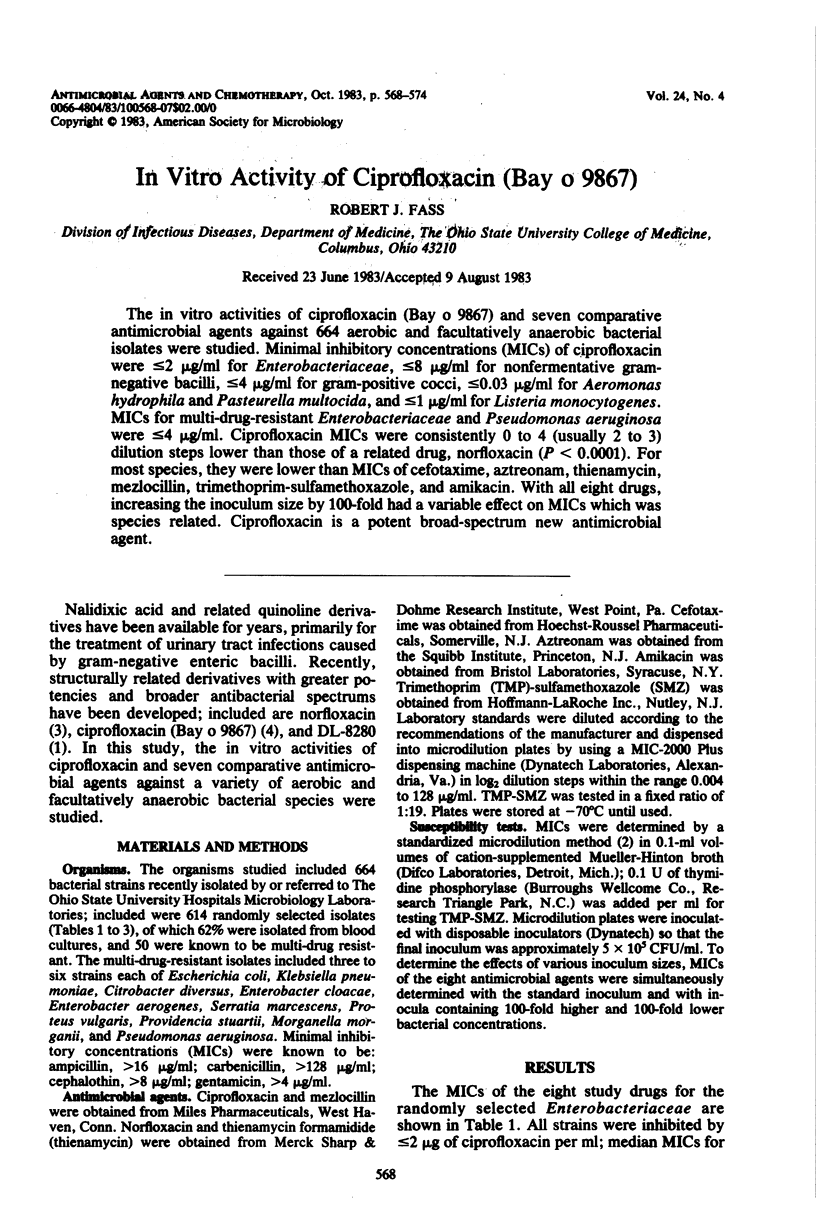
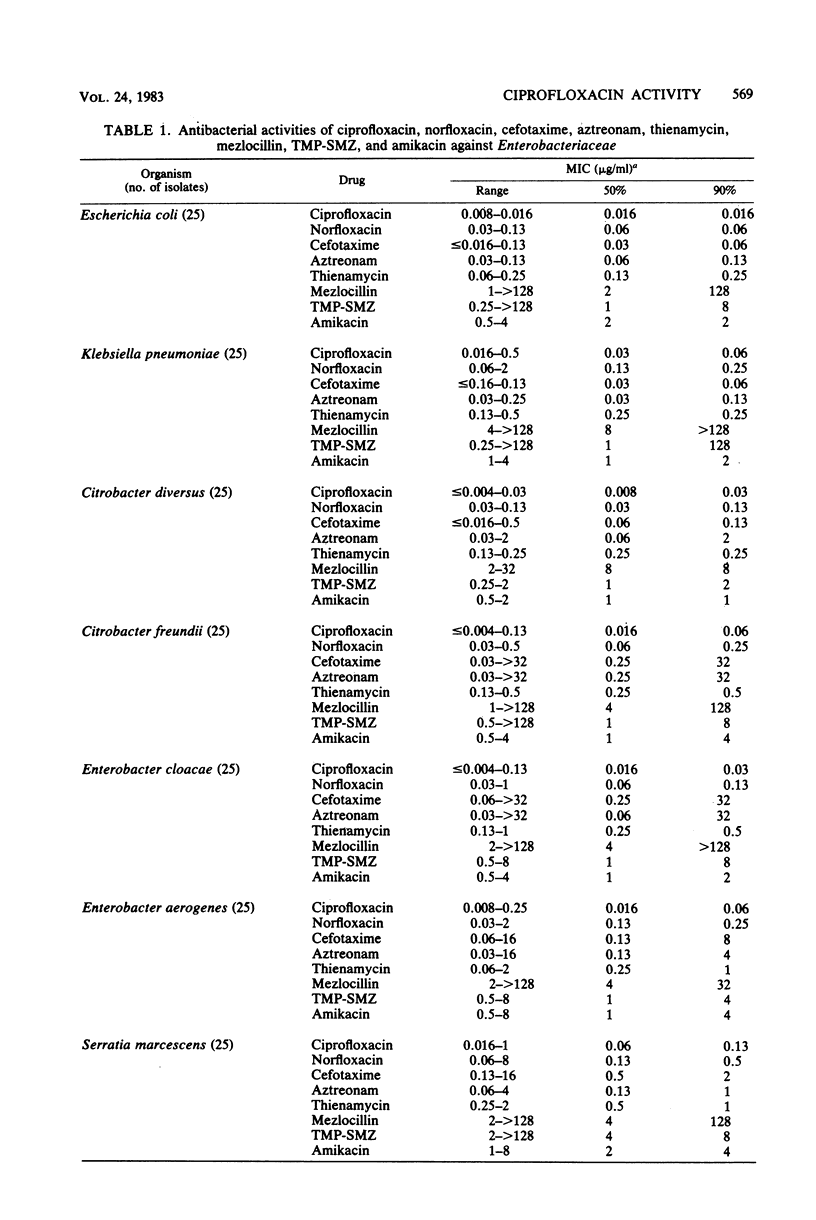
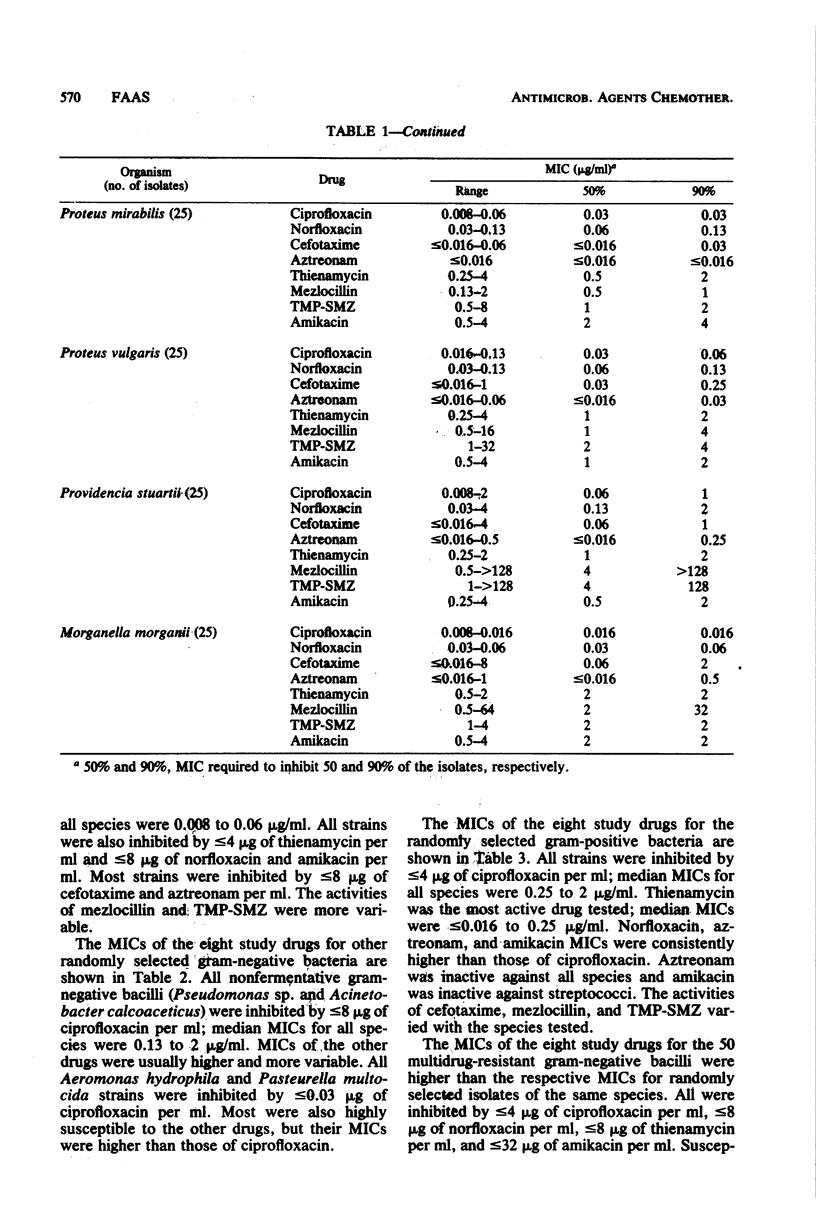
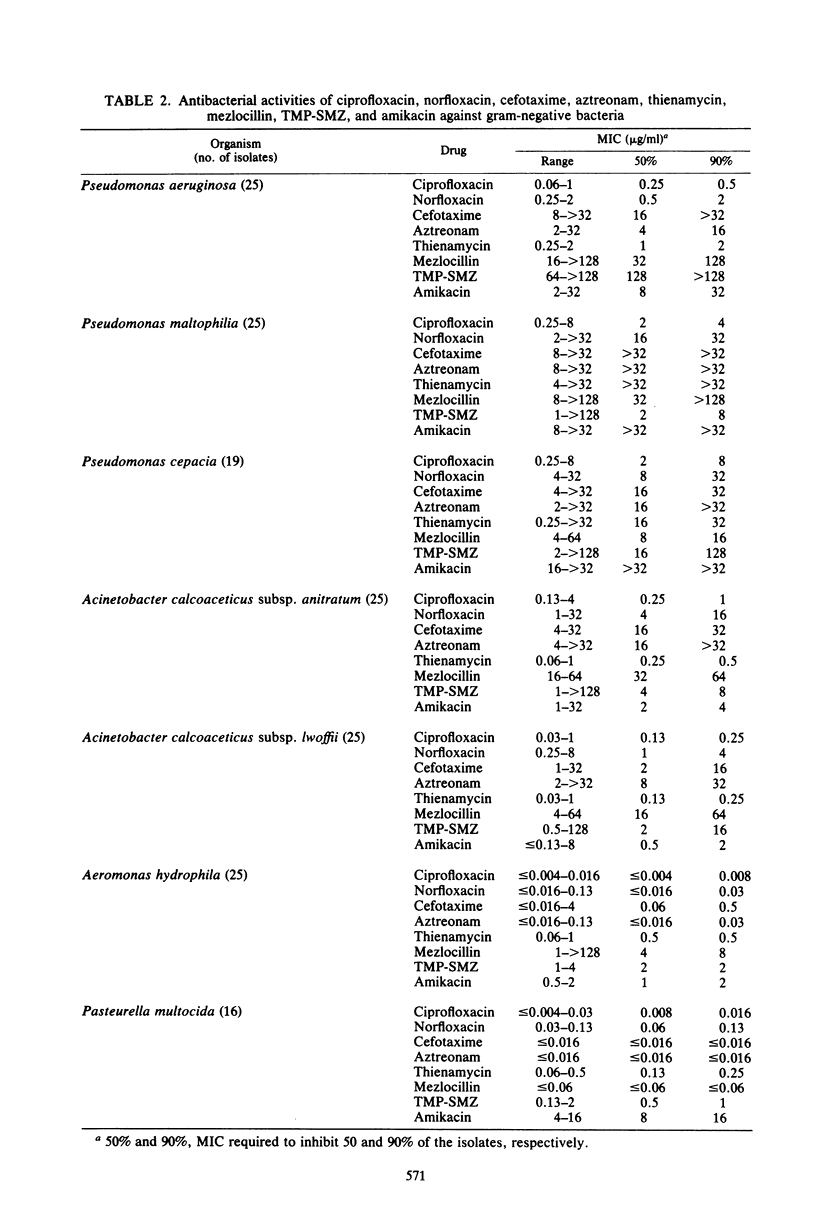
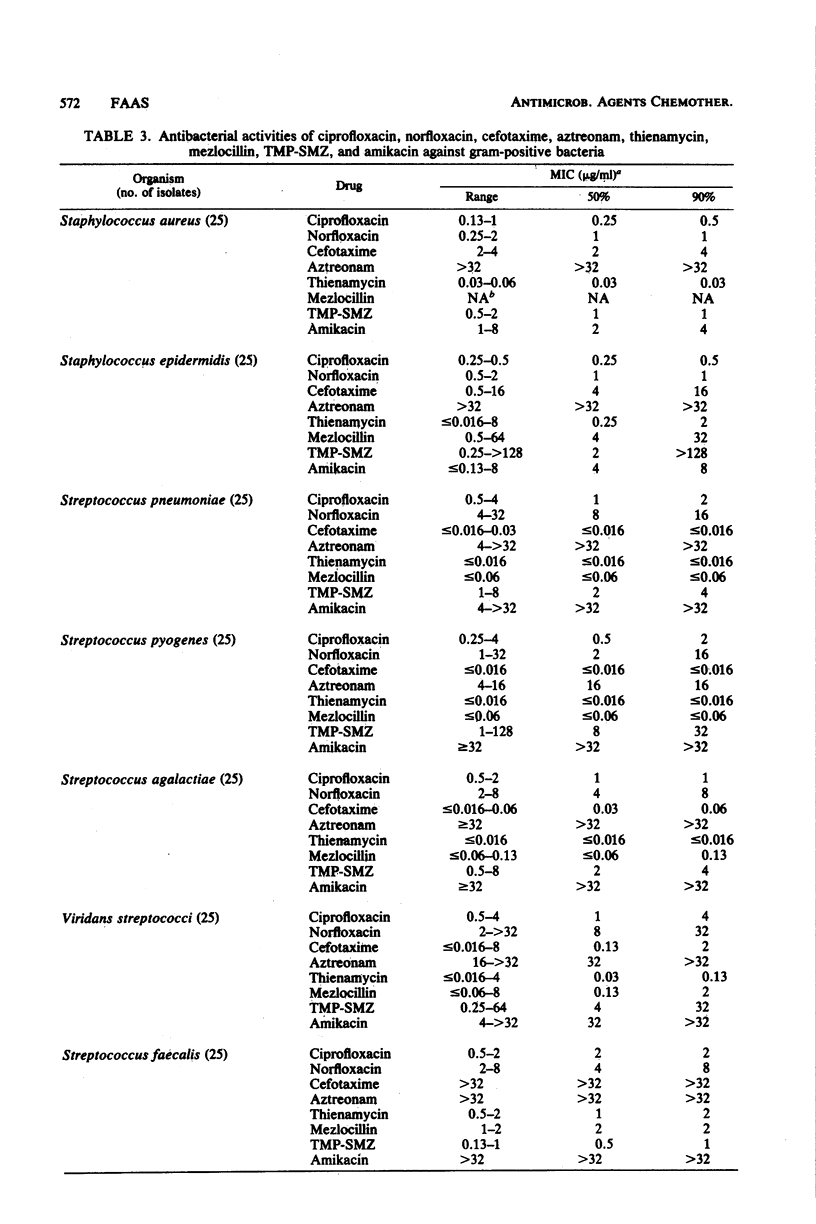
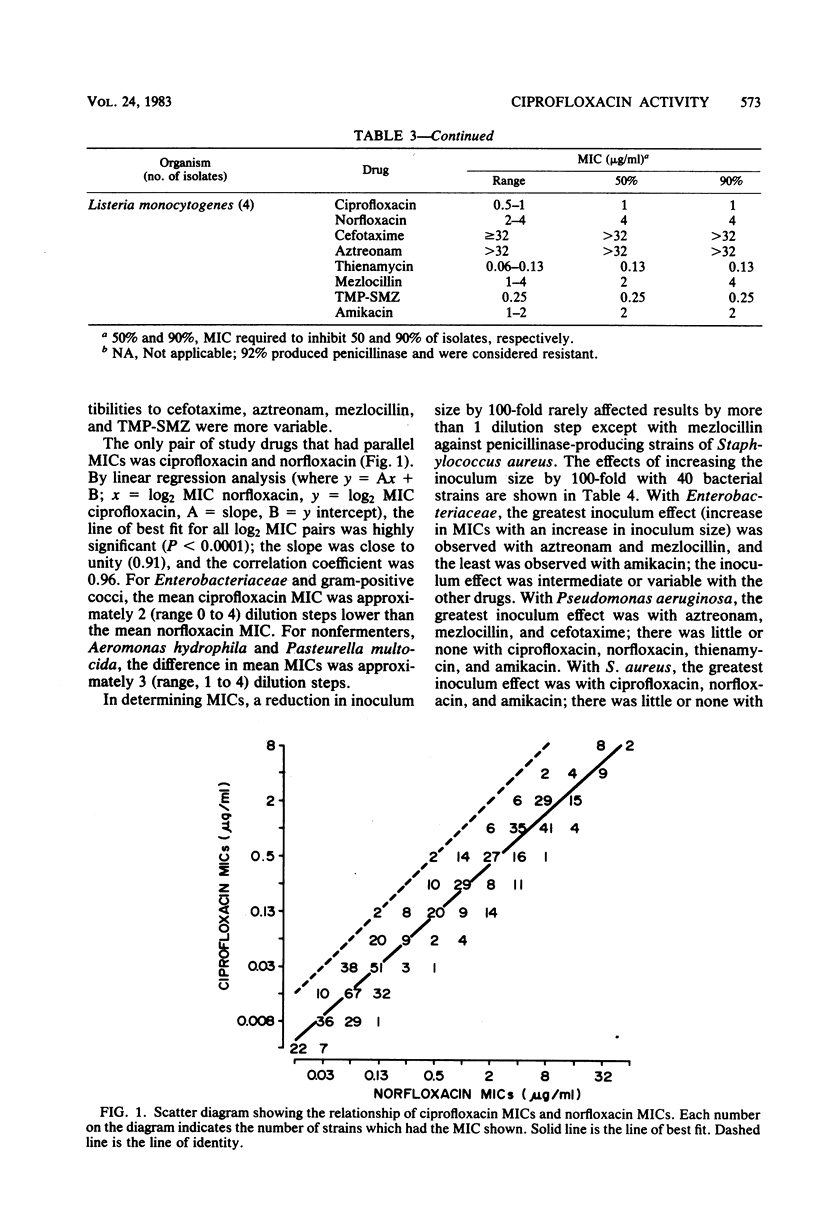
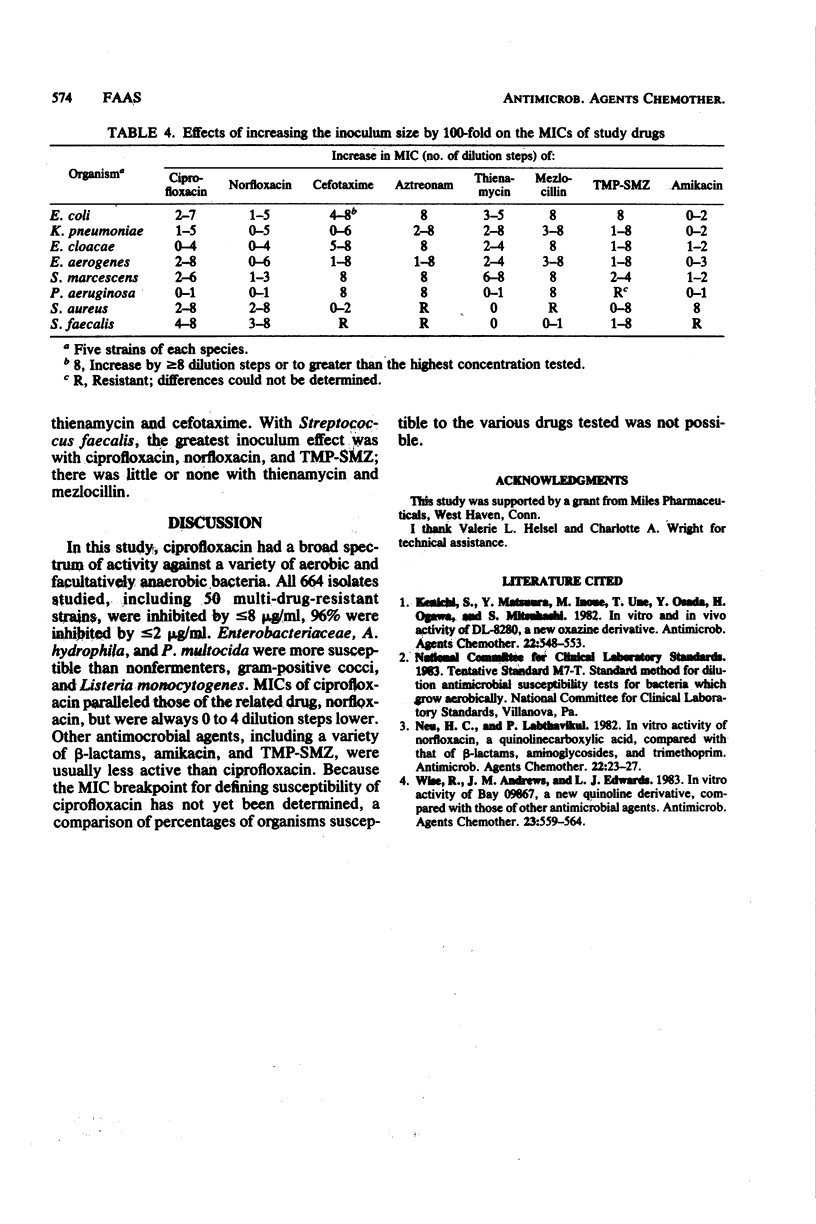
Selected References
These references are in PubMed. This may not be the complete list of references from this article.
- Neu H. C., Labthavikul P. In vitro activity of norfloxacin, a quinolinecarboxylic acid, compared with that of beta-lactams, aminoglycosides, and trimethoprim. Antimicrob Agents Chemother. 1982 Jul;22(1):23–27. doi: 10.1128/aac.22.1.23. [DOI] [PMC free article] [PubMed] [Google Scholar]
- Wise R., Andrews J. M., Edwards L. J. In vitro activity of Bay 09867, a new quinoline derivative, compared with those of other antimicrobial agents. Antimicrob Agents Chemother. 1983 Apr;23(4):559–564. doi: 10.1128/aac.23.4.559. [DOI] [PMC free article] [PubMed] [Google Scholar]


